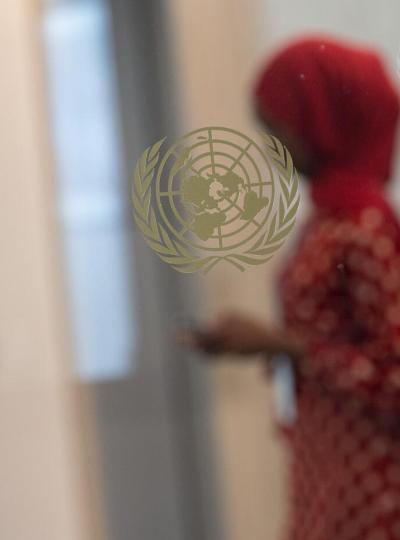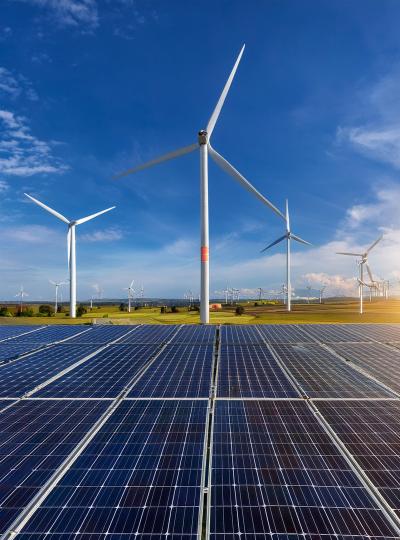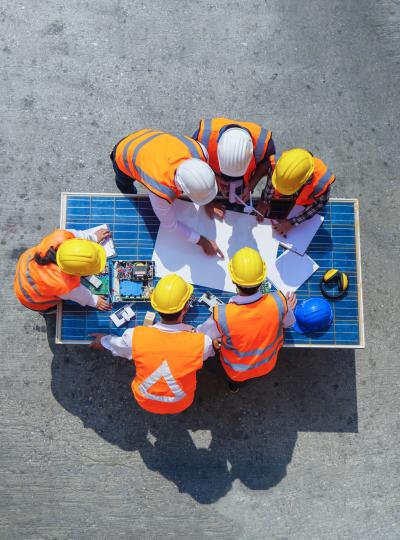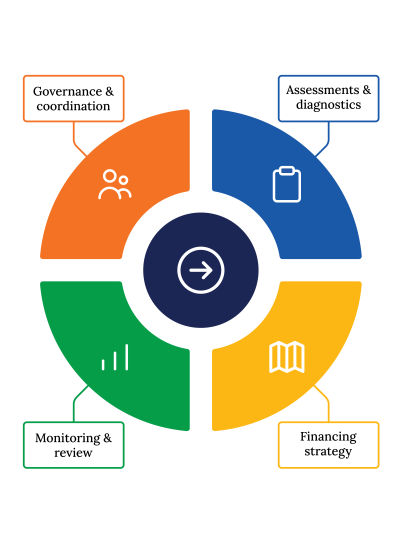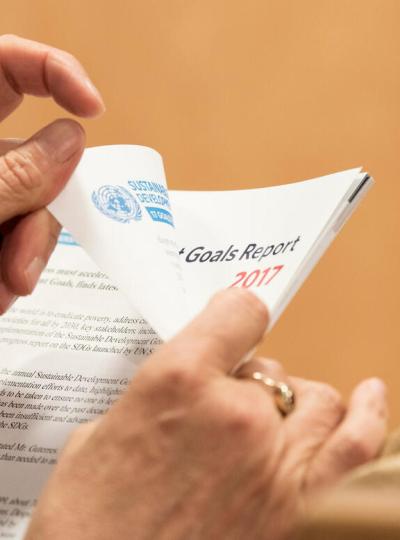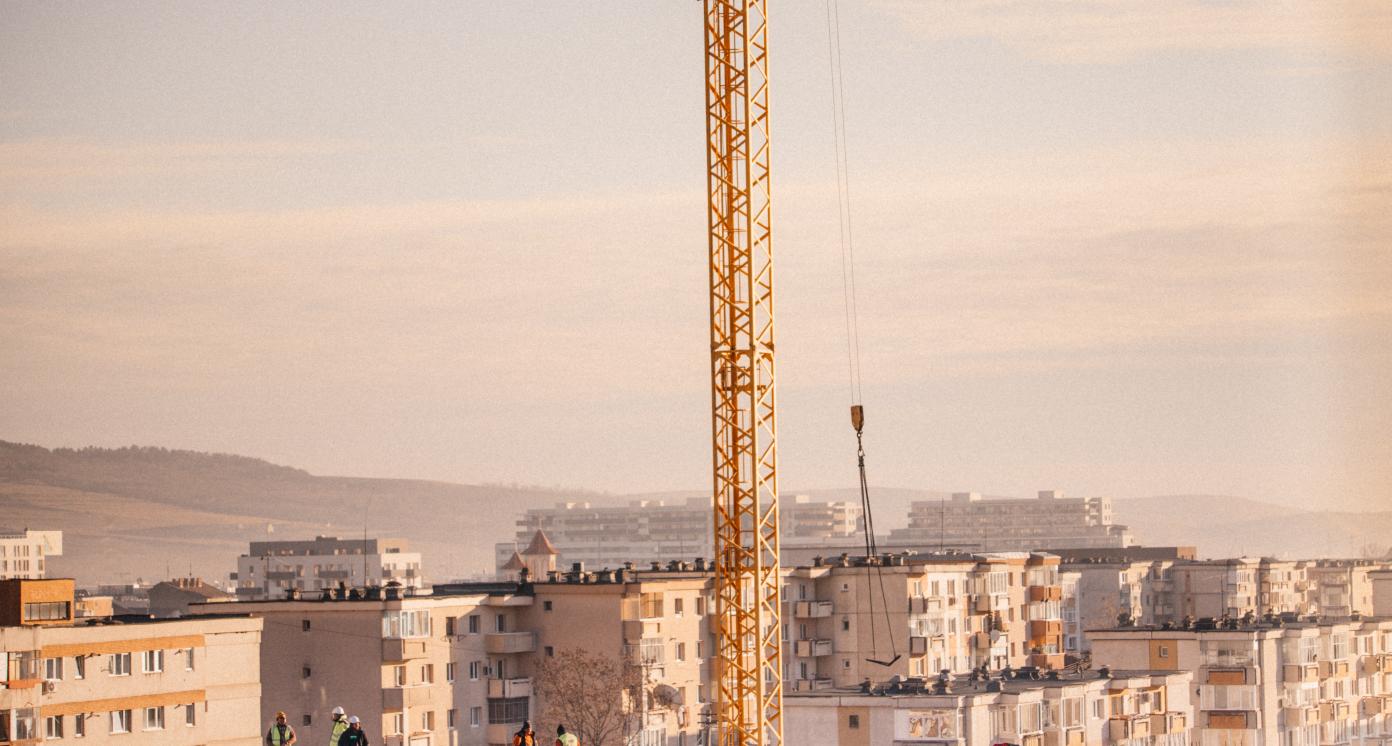Energy Efficiency Retrofitting for Commercial and Residential Buildings
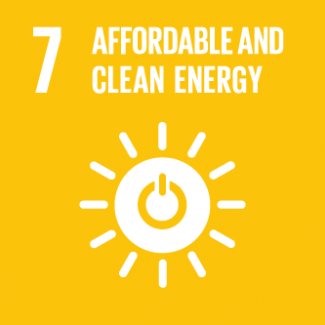
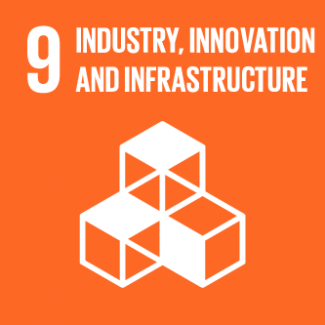
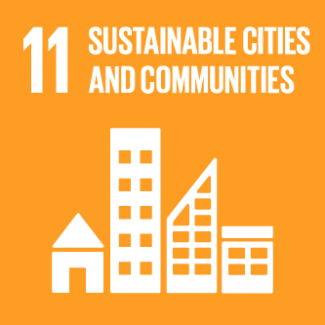
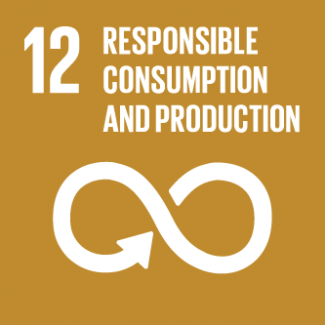
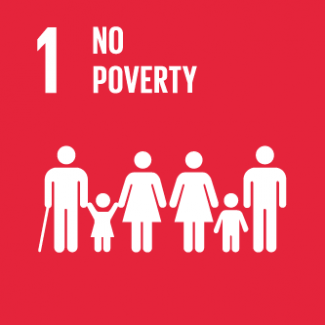
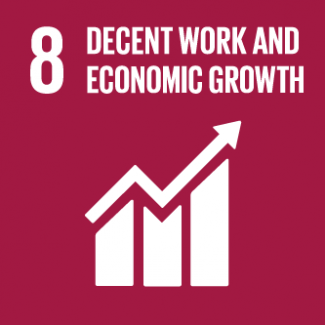
Business Model Description
Design, implement, and maintain energy efficiency retrofitting solutions for industrial and commercial buildings by integrating solar panels, high-efficiency heating, ventilation and air conditioning (HVAC) systems, smart energy controls, and insulation upgrades. Operate under performance-based contracts, sharing energy cost savings with clients while offering equipment sales, installation, maintenance, and data-driven energy monitoring.
Expected Impact
Enhancing energy efficiency by retrofitting buildings, reducing energy poverty, lowering emissions, and improving living conditions for vulnerable communities.
How is this information gathered?
Investment opportunities with potential to contribute to sustainable development are based on country-level SDG Investor Maps.
Disclaimer
UNDP, the Private Finance for the SDGs, and their affiliates (collectively “UNDP”) do not seek or solicit investment for programmes, projects, or opportunities described on this site (collectively “Programmes”) or any other Programmes, and nothing on this page should constitute a solicitation for investment. The actors listed on this site are not partners of UNDP, and their inclusion should not be construed as an endorsement or recommendation by UNDP for any relationship or investment.
The descriptions on this page are provided for informational purposes only. Only companies and enterprises that appear under the case study tab have been validated and vetted through UNDP programmes such as the Growth Stage Impact Ventures (GSIV), Business Call to Action (BCtA), or through other UN agencies. Even then, under no circumstances should their appearance on this website be construed as an endorsement for any relationship or investment. UNDP assumes no liability for investment losses directly or indirectly resulting from recommendations made, implied, or inferred by its research. Likewise, UNDP assumes no claim to investment gains directly or indirectly resulting from trading profits, investment management, or advisory fees obtained by following investment recommendations made, implied, or inferred by its research.
Investment involves risk, and all investments should be made with the supervision of a professional investment manager or advisor. The materials on the website are not an offer to sell or a solicitation of an offer to buy any investment, security, or commodity, nor shall any security be offered or sold to any person, in any jurisdiction in which such offer would be unlawful under the securities laws of such jurisdiction.
Country & Regions
- Republic of North Macedonia: Skopje
- Republic of North Macedonia: Polog
- Republic of North Macedonia: Southwestern
- Republic of North Macedonia: Pelagonia
- Republic of North Macedonia: Northeastern
Sector Classification
Renewable Resources and Alternative Energy
Development need
The Republic of North Macedonia relies heavily on imported fossil fuels. This increases its energy vulnerability and carbon footprint. The need for decentralized renewable energy solutions, particularly solar, is critical to ensuring energy security, reducing long-term costs, and supporting the transition to a low-carbon economy. (1, 2, 3)
National policies prioritize greater reliance on renewable energy and promotion of energy efficiency, aligning with EU directives on green transformation. PPPs and international funding sources, including EU IPA III and Growth Plan for Western Balkans, can support the sector’s growth. (1-8)
Gender inequalities and marginalization issues
Women and marginalized communities have lower participation in energy sector employment and decision-making. Expanding decentralized solar energy systems can empower women through job creation, skill development, and entrepreneurship in energy solutions. Additionally, rural electrification can improve access to education, healthcare, and digital services for underrepresented communities. (1, 40)
Investment opportunities introduction
The renewable energy sector offers attractive investment prospects beyond solar, including wind farms, small hydropower plants, and biomass projects. Major investments in grid modernization and energy storage infrastructure are also underway. Supportive policies, EU integration goals, and rising energy demand enhance the sector’s appeal for investors. (1)
Key bottlenecks introduction
Regulatory uncertainties, slow permitting processes, and limited access to financing for small-scale energy producers hamper sector expansion. Grid infrastructure requires upgrades to accommodate decentralized energy generation.A lack of local expertise in battery storage and smart energy management technologies calls for targeted capacity-building programs. (1, 2)
Alternative Energy
Development need
Industrial and commercial buildings are major energy consumers, requiring energy efficiency improvements and renewable energy integration to reduce costs and emissions. Retrofitting with solar panels, efficient HVAC systems, and smart energy controls is essential to enhance sustainability, energy security, and compliance with EU directives. (1, 20, 10)
Policy priority
Energy efficiency in buildings is a key focus under national policies which promote retrofitting initiatives, smart energy management, and green financing. Government incentives, grants, and participation in EU climate programs support the transition to energy-efficient infrastructure. The country has committed to apply the ‘energy efficiency first principle’ under the NDS. (1-8)
Gender inequalities and marginalization issues
Women and low-income communities are disproportionately affected by energy poverty and have limited access to energy-efficient housing and financing. Encouraging women’s participation in energy efficiency projects, providing targeted subsidies, and ensuring equitable access to retrofitting programs can help address these disparities. (1)
Investment opportunities introduction
The subsector presents opportunities in energy-efficient building materials, smart automation systems, and integrated renewable solutions. Energy Service Companies (ESCOs) -based models, green loans, and PPP frameworks reduce financial barriers for businesses, while digitalization and data-driven energy optimization offer market expansion potential. (39, 40)
Key bottlenecks introduction
High upfront costs, regulatory complexities, slow adoption of performance-based contracting, and a lack of skilled workforce in energy-efficient retrofitting hinder progress. Limited consumer awareness and financing constraints further restrict large-scale implementation of energy-saving solutions in industrial and commercial sectors. (41)
Solar Technology and Project Developers
Pipeline Opportunity
Energy Efficiency Retrofitting for Commercial and Residential Buildings
Design, implement, and maintain energy efficiency retrofitting solutions for industrial and commercial buildings by integrating solar panels, high-efficiency heating, ventilation and air conditioning (HVAC) systems, smart energy controls, and insulation upgrades. Operate under performance-based contracts, sharing energy cost savings with clients while offering equipment sales, installation, maintenance, and data-driven energy monitoring.
Business Case
Market Size and Environment
Approx. 425,590 dwellings are energy inefficeint (80% of occupied dwellings).
North Macedonia has 531,987 occupied dwellings, 80% of which are energy inefficient. With an average of 3.07 persons per household and 4.1 tCO₂ per capita, these dwellings account for approx. 5.36 million tonnes of CO₂ per year. Energy retrofitting could reduce emissions by around 1.6 million tonnes annually. (38, 41, 42)
Indicative Return
10% - 15%
A national-level study for North Macedonia modeled 30–40% energy savings for typical multi-apartment building retrofits, estimating an approximate ROI of 10–15% under current energy prices. (43)
The payback period for energy efficiency projects in SMEs averages 5-7 years, with financial incentives reducing upfront costs. (25)
Energy-efficient building renovations increase property values by 5-15% due to reduced energy costs and higher market demand. (27)
Investment Timeframe
Short Term (0–5 years)
Investors might anticipate a payback period of approximately 2.6 years. (23)
Ticket Size
> USD 10 million
Market Risks & Scale Obstacles
Capital - CapEx Intensive
Capital - Requires Subsidy
Market - Highly Regulated
Impact Case
Sustainable Development Need
Reduces dependence on fossil fuels by integrating energy-efficient systems and renewable energy, lowering greenhouse gas emissions, and supporting North Macedonia’s transition to a low-carbon economy. (1, 10)
By cutting energy costs for industrial and commercial buildings, retrofitting enhances business competitiveness, improves financial stability, and creates long-term savings, making companies more resilient to energy price fluctuations. (10)
Energy efficiency retrofitting fosters employment in energy efficiency services, from engineering to construction, while promoting inclusive workforce development by supporting training programs and financing options for SMEs and marginalized groups. (10, 32)
Gender & Marginalisation
Women and marginalized communities are disproportionately affected by energy poverty due to lower incomes and limited access to financing. Retrofitting promotes inclusive green financing to improve affordability and access to sustainable energy solutions. (32, 33, 34)
Supports gender-inclusive workforce development by encouraging women’s participation in engineering, construction, and energy management roles through training programs and employment opportunities in the retrofitting sector. (32, 33, 34)
Vulnerable populations, including low-income households and small businesses, often lack access to energy-efficient buildings. The retrofitting promotes policies and financing mechanisms that ensure retrofitting benefits are equitably distributed (32, 33, 34)
Expected Development Outcome
By integrating energy-efficient technologies and renewable energy, the energy efficiency retrofitting reduces industrial and commercial energy demand, cutting greenhouse gas emissions and supporting North Macedonia’s climate targets.
Energy retrofitting lowers operational costs, improves profitability, and strengthens businesses against rising energy prices, fostering economic stability and long-term competitiveness in various sectors.
Energy efficiency retrofitting promotes job creation in energy efficiency services, supports gender inclusion in technical fields, and expands access to energy-efficient infrastructure, reducing energy poverty and improving living conditions.
Gender & Marginalisation
Energy efficiency retrofitting supports training and employment opportunities for women in energy efficiency roles, promoting gender inclusivity in engineering, construction, and energy management fields.
By expanding green financing and targeted subsidies, it ensures that marginalized groups and small businesses can afford retrofitting, reducing energy poverty and improving living conditions.
Women-led businesses and low-income communities benefit from reduced energy expenses, increasing financial stability and enabling reinvestment in business growth, education, and well-being.
Primary SDGs addressed

7.3.1 Energy intensity measured in terms of primary energy and GDP
Share of electricity from renewable sources in total electricity production (32.1% in 2023). (17)

9.4.1 CO2 emission per unit of value added
Approximately 0.37 kilograms of CO₂ emitted per dollar of GDP.
Secondary SDGs addressed




Directly impacted stakeholders
People
Gender inequality and/or marginalization
Planet
Corporates
Public sector
Indirectly impacted stakeholders
People
Gender inequality and/or marginalization
Planet
Corporates
Public sector
Outcome Risks
High upfront costs for retrofitting may deter low-income households and SMEs despite financial incentives. Limited access to affordable loans can exclude vulnerable groups from benefiting fully. (25)
Improved efficiency may lead to increased energy use due to behavioral changes (e.g., using heating/cooling more), offsetting some expected reductions in consumption and emissions.
Limited availability of skilled labor, high material costs, or delays in accessing energy-efficient technologies could slow down implementation, reducing the overall effectiveness of retrofitting efforts. (28)
Women, particularly in low-income and single-parent households, may face barriers in accessing retrofitting due to financial dependency, lack of property ownership, or exclusion from decision-making.
Impact Risks
Delays in government incentives, inconsistent policies, or regulatory barriers could slow down retrofitting adoption, reducing its impact on energy efficiency and emission reductions. (28)
Low awareness, skepticism about cost savings, or resistance to change may lead to low participation in retrofitting programs, limiting expected environmental and economic benefits. (26)
Poor implementation, low-quality materials, or inadequate retrofitting techniques may result in lower-than-expected energy savings, reducing the effectiveness of the intervention. (30)
Extreme weather events, such as heatwaves or floods, could damage retrofitted buildings or reduce their efficiency gains, making it harder to achieve long-term sustainability goals. (31)
Gender inequality and/or marginalization risk: Women-led households and marginalized groups struggle to access financing due to systemic barriers, thereby exacerbating social disparities. (1)
Impact Classification
What
Increased energy efficiency through retrofitting, leads to reduced energy consumption, lower CO₂ emissions, and improved living conditions.
Who
Households, SMEs, and public institutions. ulnerable populations, such as low-income families, marginalized communities (e.g., Roma), and women-led households, face greater energy poverty. (25)
Risk
Changes in government incentives or inconsistent enforcement could slow retrofitting adoption. High upfront costs and climate change impacts reduce energy effiencient gains.
Contribution
Most buildings would remain energy inefficient, leading to continued high energy costs and emissions.
How Much
Scale: Targets 80% of residential buildings (42). Depth: Annual energy savings of at least 0.6 ktoe (47)
Impact Thesis
Enhancing energy efficiency by retrofitting buildings, reducing energy poverty, lowering emissions, and improving living conditions for vulnerable communities.
Enabling Environment
Policy Environment
NDS 2024-2044 outlines the key strategic prioprities in the country's green transformation. The sectoral goals are to significantly reduce greenhouse gas emissions, improve air quality and improve energy efficiency. (1)
Strategy for Development of the Energy Sector outlines key energy scenarios (reference, medium transition, and green). It prioritizes energy efficiency and building renovation as key pillars for reducing energy demand and supporting retrofitting initiatives. (6)
National Energy and Climate Plan complements energy retrofitting efforts by promoting the integration of renewable energy systems in buildings (priorities PM-EE2 and PM_EE3), enhancing overall energy performance and sustainability. (8)
National Energy Efficiency Action Plan 2021 sets targets for reducing energy use in buildings, promoting retrofitting, and enabling financing mechanisms. It fosters a strong policy environment aligned with EU goals and supports inclusive, low-carbon development. (28)
Smart Specialization Strategy prioritizes sustainable materials and smart buildings, promoting green innovation, retrofitting, and cross-sector investment. It fosters R&D, inclusive growth, and supports green transition aligned with EU frameworks. (2)
Financial Environment
Financial incentives: A credit line of EUR 10 million for energy efficiency and renewable energy sources has been created by the Development Bank of North Macedonia. The Green Finance Facility by UNDP and EBRD also provides favorable financing (24,25)
Regulatory Environment
Law on Energy promotes energy efficiency, enables market liberalization, incentivizes renewables, and aligns with the National Energy and Climate Plan. It ensures regulatory oversight and fosters a green transition. (26)
Law on Construction mandates that construction projects include energy efficiency measures, requiring certification from licensed energy auditors to confirm compliance with minimum energy performance standards. (26)
Law on Construction Land governs the management, development, and allocation of construction land. While it facilitates the availability of land for various construction projects, including potential energy-efficient and renewable energy developments. (26)
Law on Energy Efficiency as it mandates minimum energy performance standards for buildings, requiring retrofitting for public and private structures. (13)
Regulation on the Energy Performance of Buildings sets minimum energy efficiency requirements and outlines procedures for energy performance certification of buildings. (19)
Marketplace Participants
Private Sector
Construction companies, solar power installation companies, large companies with energy inefficient buildings
Government
Ministry of Economy, Energy Regulatory Commission, Development Bank of North Macedonia (Energy Efficiency Fund)
Multilaterals
European Bank for Reconstruction and Development (EBRD), European Investment Bank (EIB), World Bank, UNDP, KfW.
Public-Private Partnership
Green Financing Facility. Municipalities can collaborate with solar firms for public buildings and rural electrification. (44)
Target Locations
Republic of North Macedonia: Skopje
Republic of North Macedonia: Polog
Republic of North Macedonia: Southwestern
Republic of North Macedonia: Pelagonia
Republic of North Macedonia: Northeastern
References
- (1) National Development Strategy of the Republic of North Macedonia 2024-2044
- (2) Smart Specialization Strategy of the Republic of North Macedonia
- (3) European Green Deal and Communication and roadmap on the European Green Deal (European Commission) https://commission.europa.eu/strategy-and-policy/priorities-2019-2024/european-green-deal_en
- (4) Directive on the Energy Performance of Buildings 2002/91/EC, 2010/31/EU.
- (5) Directive on Energy Efficiency and the Use of Energy Services, and on repealing Council Directive 93/76/EEC and Directive 2006/32/EC.
- (6) Directive 2008/1/EC on Integrated Pollution Prevention and Control.
- (7) Directive 2012/27/EU on Energy Efficiency, amending Directives 2009/125/EC and 2010/30/EU, and repealing Directives 2004/8/EC and 2006/32/EC.
- (8) Directive on the Promotion of Combined Heat and Power Production, based on useful heat demand in the internal energy market, and amending Directive 92/42/EEC, 2004/8/EC. "9) Green Agenda for Western Balkans (COMMISSION STAFF WORKING DOCUMENT Guidelines for the Implementation of the Green Agenda for the Western Balkans, Brussels, 6.10.2020 SWD(2020) 223 final)"
- (10) Strategy for the Development of the Energy Sector until 2040 (Government of North Macedonia) https://vicepremier-ekonomija.gov.mk/sites/default/files/dokumenti/EnergyDevelopmentStrategy_FINAL_Submitted_toGovMK_08.01.2020_clean_za_sluzben_vesnik_za_na_web.pdf
- (11) National Energy and Climate Plan (NECP) 2022, https://www.economy.gov.mk/content/Official%20NECP_EN.pdf
- (12) Energy Law (“Official Gazette of the Republic of North Macedonia” no. 101/2025 from 20.05.2025)
- (13) Law on Energy Efficiency (Official Gazette of the Republic of Macedonia No. 32/2020).
- (14) Construction Law (Official Gazette of the Republic of Macedonia No. 130/09).
- (15) Law on Local Self-Government (Official Gazette of the Republic of Macedonia No. 05/02).
- (16) Law on Concessions and Other Forms of Public-Private Partnerships (Official Gazette of the Republic of Macedonia Nos. 07/08, 139/08, 64/09, and 52/10).
- (17) Law on Financing the Units of Local Self-Government (Official Gazette of the Republic of Macedonia No. 61/04) and subsequent amendments (https://finance.gov.mk/wp-content/uploads/2023/02/%D0%97%D0%B0%D0%BA%D0%BE%D0%BD-%D0%B7%D0%B0-%D1%84%D0%B8%D0%BD%D0%B0%D0%BD%D1%81%D0%B8%D1%80%D0%B0%D1%9A%D0%B5-%D0%BD%D0%B0-%D0%95%D0%9B%D0%A1-%D1%80%D0%B5%D0%B4%D0%B0%D0%BA%D1%86%D0%B8%D1%81%D0%BA%D0%B8-%D0%BF%D1%80%D0%B5%D1%87%D0%B8%D1%81%D1%82%D0%B5%D0%BD-%D0%B7%D0%B0%D0%BA%D0%BB%D1%83%D1%87%D0%BD%D0%BE-%D1%81%D0%BE-173_22.pdf)
- (18) Environmental Protection Law (Official Gazette of the Republic of Macedonia No. 53/05).
- (19) Regulation on the Energy Performance of Buildings (Official Gazette of the Republic of Macedonia No. 94/13, 7/2015, 176/2015).
- (20) Regulation on Energy Audits (Official Gazette of the Republic of Macedonia No. 94/13).
- (21) Regulation on Renewable Energy Sources (Official Gazette of the Republic of Macedonia No. 96/2018).
- (22) Agnesa DOOEL Bitola Leads the Way in Energy Efficiency with Green Finance Facility Support https://ebrdgeff.com/macedonia_gff/projects/written-case-study-2/#:~:text=Key%20benefits%20of%20the%20investment,include
- (23) Energy Scouts achieve remarkable energy and CO2 reductions in North Macedonia (https://www.euki.de/en/energy-scouts-achieved-remarkable-energy-and-co2-reductions-in-north-macedonia/#:~:text=Skopje%2C%20North%20Macedonia%2C%20through%20the,58%20years)
- (24) Credit line for Energy Efficiency and Renewables, Development Bank of North Macedonia ( https://www.mbdp.com.mk/mk/Products/KreditiranjePrekuBankiProizvod/16)
- (25) UNDP North Macedonia and EBRD, Green Finance Facility (GFF) project, https://www.undp.org/north-macedonia/news/undp-north-macedonia-and-ebrd-have-partnered-together-implement-green-finance-facility-gff-project
- (26) Energy Community Implementation Report 2024, [https://www.energy-community.org/implementation/report.html]
- (27) Habitat for Humanity REELIH Project)
- (28) National Energy Efficiency Action Plan, 2021. https://www.economy.gov.mk/Upload/Documents/4NEEAP%20final%20adopted_EN.pdf
- (29) Western Balkans Info Hub. 2024. Green Transition in the Western Balkans: Final Report. Western Balkans Info Hub. https://westernbalkans-infohub.eu/wp-content/uploads/2024/08/Report_Green-Transition_final.pdf.
- (30) Energy efficiency trends in households in the EU, https://www.enerdata.net/publications/reports-presentations/efficiency-trends-households.html
- (31) North Macedonia—Country Climate and Development Report, October 2024, World Bank, https://www.worldbank.org/en/country/northmacedonia/publication/north-macedonia-country-climate-and-development-report-key-highlights
- (32) Joint SDG Fund. (2025, January 23). A family’s solar-powered dream in North Macedonia. Joint SDG Fund. https://jointsdgfund.org/article/familys-solar-powered-dream-north-macedonia
- (33) PwC North Macedonia, PwC Montenegro, & PwC Albania. (2024, January). Market study on the energy sector landscape in North Macedonia, Albania, and Montenegro. Subnational Climate Fund. https://www.subnational.finance/wp-content/uploads/2024/01/10-montenegro-albania-north-macedonia-pre-f-market-study.pdf
- (34) CEE Bankwatch Network. (2024). A well-designed national energy efficiency fund in North Macedonia will enable long-term energy savings in the residential and public sectors. https://bankwatch.org/publication/a-well-designed-national-energy-efficiency-fund-in-north-macedonia-will-enable-long-term-energy-savings-in-the-residential-and-public-sectors
- (35) Ritchie, H., & Roser, M. (2020). North Macedonia: CO₂ Country Profile. Our World in Data. https://ourworldindata.org/co2/country/north-macedonia
- (36) European Bank for Reconstruction and Development / UNDP (2023). GEFF North Macedonia. EBRD Green Economy Financing Facility. https://ebrdgeff.com/macedonia_facilities/
- (37) World Bank. (2020). North Macedonia - Public Sector Energy Efficiency Project. https://documents1.worldbank.org/curated/en/616851580698875411/pdf/North-Macedonia-Public-Sector-Energy-Efficiency-Project.pdf
- (38) Number of living quarters and number of inhabitants in the living quarters by type of the living quarter, by municipalities, Census 2021, https://makstat.stat.gov.mk/PXWeb/pxweb/en/MakStat/MakStat__Popisi__Popis2021__NaselenieVkupno__Stanovi/T3001P21.px/?rxid=1952fc0b-52b5-493c-a674-2385ff882e88
- (39) International Energy Agency (IEA). (2023). Energy Efficiency 2023. https://www.iea.org/reports/energy-efficiency-2023 "40) World Bank. (2020). Financing Energy Efficiency: Lessons from the Global Environment Facility (GEF). https://openknowledge.worldbank.org/handle/10986/34510"
- (41) Stattistical Atlas 2021. https://www.stat.gov.mk/publikacii/2022/Statistichki-atlas-mk-en-web.pdf
- (42) Hadžispirkoska Stefanova, N. (2024, December 25). Energy-efficient buildings in Macedonia: How much electricity can be saved? Bloomberg Adria. https://mk.bloombergadria.com/green/pozeleno-ziveenje/71532/energetski-efikasni-zgradi-vo-makedonija-kolku-struja-moze-da-se-zastedi/news
- (43) World Bank. (2022). Western Balkans Regional Energy Efficiency Program: Building Renovation Opportunities and Financial Models.
- (44) European Commission (2020) A Renovation Wave for Europe – Greening our buildings, creating jobs, improving lives (COM/2020/662 final). https://eur-lex.europa.eu/legal-content/EN/TXT/?uri=CELEX:52020DC0662 "45) World Bank. (2020). Financing Energy Efficiency: Lessons from the Global Environment Facility (GEF). Available at: https://openknowledge.worldbank.org/handle/10986/34510"
- (46) Energy Community Secretariat. (2021). Annual Implementation Report 2021: Energy Efficiency in the Western Balkans. Vienna: Energy Community. https://www.energy-community.org
- (47) Government of the Republic of North Macedonia. (2021). National Energy Efficiency Action Plan (NEEAP). Ministry of Economy. https://www.economy.gov.mk


